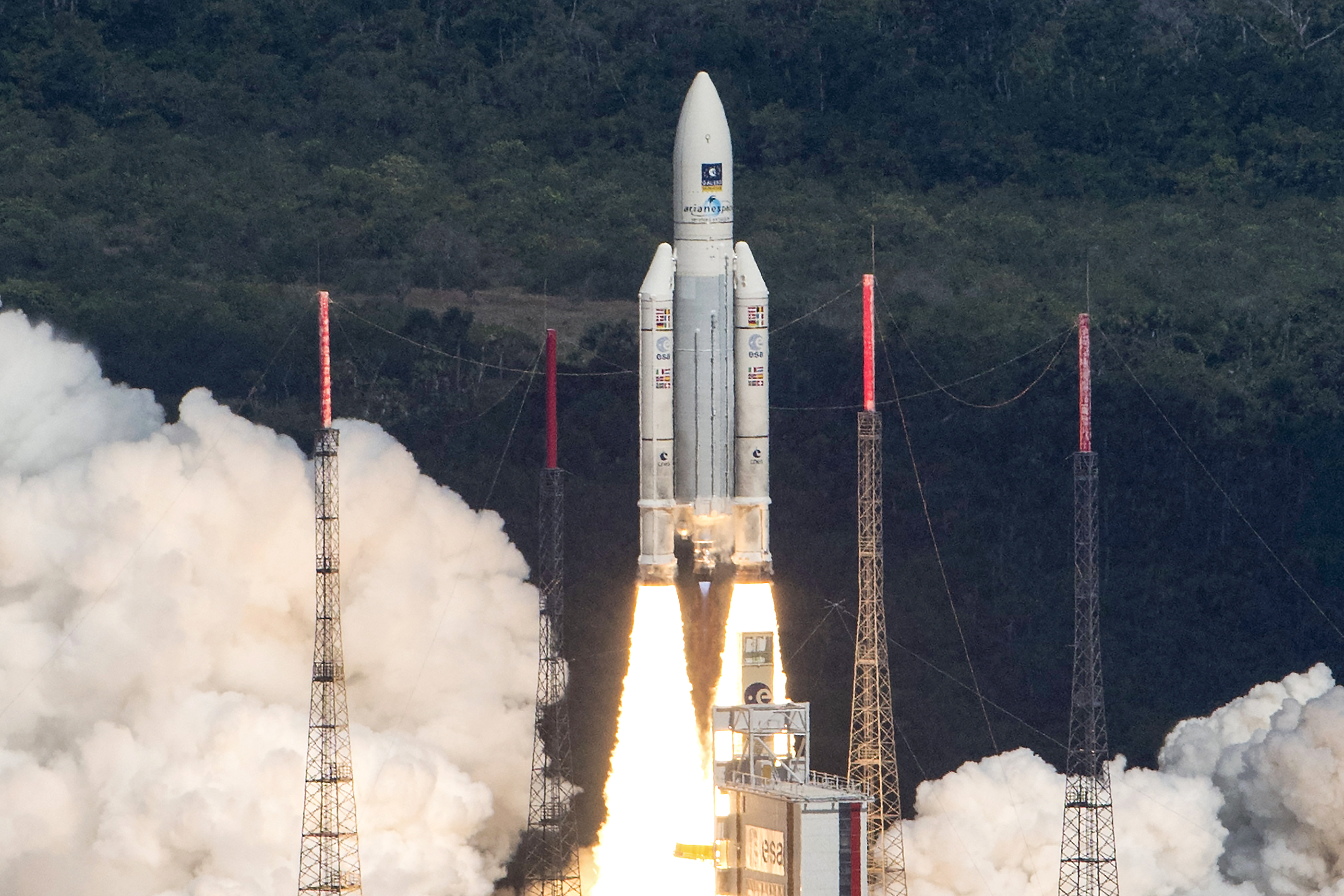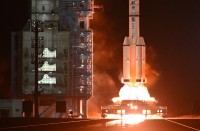
Ariane 5 successfully launched on November 17 four satellites which will be part of the Galileo global satellite navigation system. / AFP PHOTO /
PARIS, France (AFP) — Four Galileo satellites lifted off on board the Ariane 5 rocket from French Guiana on Thursday and will soon be detectable by European smartphones.
The Galileo satellites will boost Europe’s sat-nav capabilities, reducing their reliance on America’s Global Positioning System (GPS).
Liftoff was at 10:06 am (1306 GMT) from Kourou in the French oversees territory in South America.
It was the first time the Ariane 5 rocket, which is made under the authority of the European Space Agency (ESA), was used to launch Galileo satellites into space.
It can carry four such satellites compared to the two normally carried by Russian Soyuz rockets.
“Four satellites in one go, that’s a first for us,” said ESA general manager Jan Woerner just before liftoff.
The satellites could be operational before the end of the year, which is good news for smartphone users in Europe.
There will be 18 Galileo satellites in operation initially, although the total number will be brought up to 30 by 2020.
“The idea is to have positioning accurate to one metre and dating accurate to several billionths of a second,” Jean-Yves Le Gall, president of the French space agency CNES, said.
For this launch, the Ariane 5 rocket had to be specially adapted.
Unlike telecommunications satellites, which are normally launched by Ariane 5 and are equipped with their own propulsion mechanisms, the Galileo geolocation satellites need to be carried practically the whole way to their final destination at almost 23,000km (14,000 miles)
“The Galileo satellites then only have to make a few adjustment manoeuvres to reach their final operational position,” Stephane Israel, managing director of Arianespace, the makers of Ariane 5, told AFP.
“On this mission it’s Ariane’s upper stage engine which does almost the whole job,” he said, adding that it was due to deliver the satellites into orbit around 1702 GMT.
© 1994-2016 Agence France-Presse







